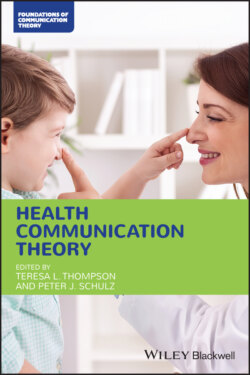Читать книгу Health Communication Theory - Группа авторов - Страница 22
Conclusion
ОглавлениеThe goal of this volume is to facilitate the process of understanding and applying health communication theory in future scholarship. It is hoped that this presentation of the theories we have selected for inclusion accomplishes this goal. Health communication research has made and will continue to make important contributions on both scholarly and practical levels. The grounding of future research in a theoretical foundation will undoubtedly serve to further these contributions.
At some point we have to decide if we believe what Kurt Lewin (1935) said. Everyone knows that he said “There is nothing so practical as a good theory” (p. 169) but he also said “If you want truly to understand something, try to change it” (in Tolman 1996, p. 31). The development of theory depends on research identified and tested by what Lewin called “basic social scientists” and evaluated by applied behavioral scientists. These tests provide critical information that enables basic scientists to revise, refine, or reject their initial principles.
Toward that goal, strident theoretically based tests such as structural equation modeling are useful because they allow the researcher to better understand both the relationships between observed and unobserved variables and their influence on some outcome. Because there is no standard model, the researcher must carefully specify the relationships between variables based on the theory. Unexpected relationships are consequently more difficult to ignore and point out the relative value of measured variables compared to unmeasured variables. As a multivariate test, structural equation modeling identifies boundary conditions and demands explanations for relationships that fit or do not fit the theory.
The use of experimental design as a test of the theory is also critical because as, Lewin points out, if you understand something about human behavior you should be able to change it. The use of experiments – both laboratory and field – allow those behavioral scientists charged with testing the models to demonstrate that the theory works as advertised.
It is also hoped that in the experimentation phase of theory development the researchers will focus on health behaviors. Attitudes and intentions are important but ultimately we want to see how communication behavior influences health. So at some point our research programs need to move in that direction. With the advent of new measurement technologies, we should begin looking at physiological responses to communication right along with our examination of overt behavior. We need not become neuroscientists or physicians but we do need to consider how such expertise can be incorporated within our research. Demonstrating that A1C scores, which indicate blood sugar levels, change along with the way people communicate with a health care professional is a start but ultimately we would like to demonstrate the direction of causality and we would like to see if changes in communication produce changes in health. This may best be done with longitudinal research studies. More stringent testing of our theories should help ensure that we progress as a discipline and increase our understanding the role of communication and health.
